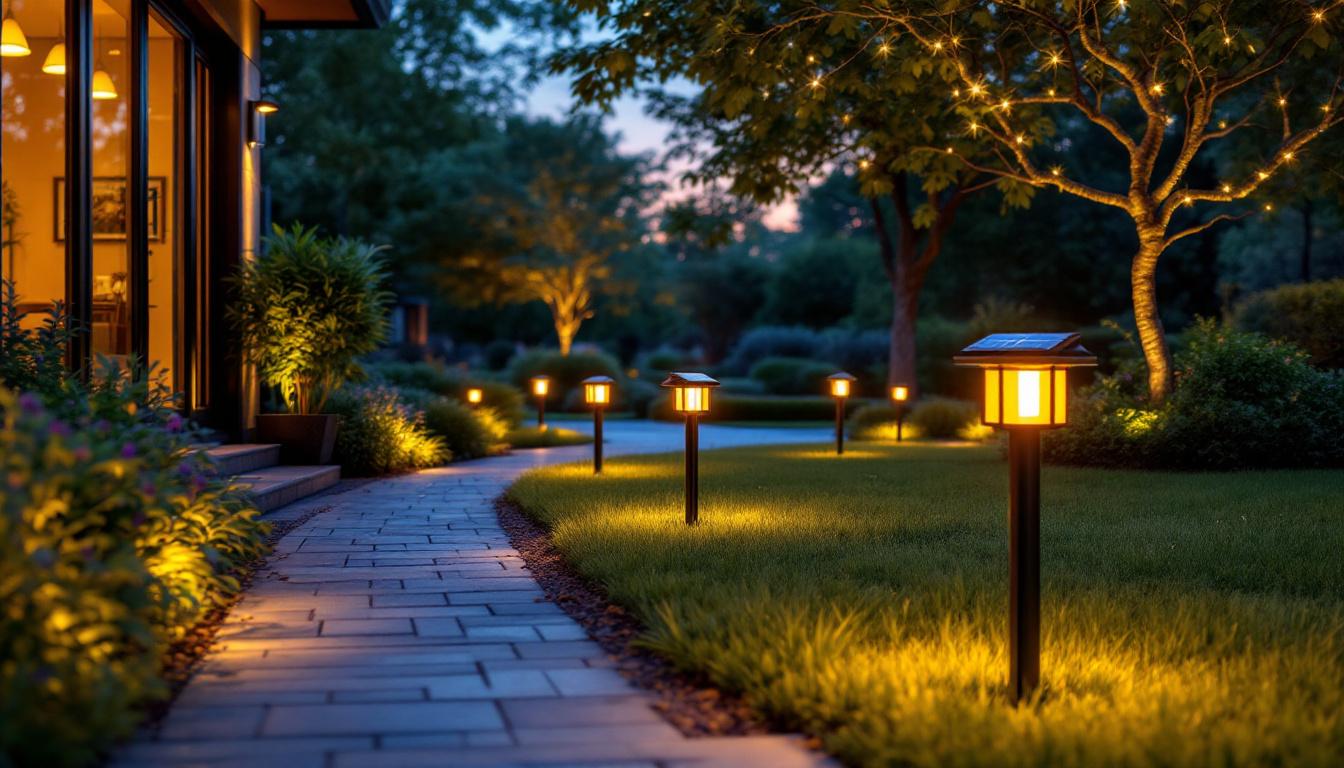
In the world of modern lighting design, pot lights, also known as recessed lights, have become a staple for both residential and commercial spaces. Their sleek, unobtrusive design allows for versatile applications, making them a favorite among lighting contractors. This article delves into the intricacies of 3 pot lights, offering insights that can enhance your understanding and application of this popular lighting solution.
Pot lights are fixtures that are installed into a hollow opening in the ceiling. They provide a clean and modern look while effectively illuminating spaces. The term “pot light” can refer to various types of recessed lighting, but in this context, we will focus on the 3 pot light configuration, which typically consists of three individual fixtures connected to a single housing. This configuration is particularly popular in residential settings, as it allows for flexible lighting arrangements that can adapt to various room layouts and functions.
There are several types of pot lights available on the market, each designed for specific applications. The most common types include adjustable, fixed, and wall-wash pot lights. Adjustable pot lights can be tilted to direct light to specific areas, making them ideal for highlighting artwork or architectural features. Fixed pot lights provide a consistent beam of light, suitable for general illumination. Wall-wash pot lights are designed to spread light evenly across a wall, enhancing the visual appeal of a space. Additionally, there are also specialized pot lights, such as those designed for damp locations, which are perfect for bathrooms or outdoor areas, ensuring safety and functionality without compromising on style.
One of the primary advantages of pot lights is their ability to create a seamless aesthetic. Since they are recessed into the ceiling, they do not protrude into the living space, allowing for a clean look that can enhance any room’s design. Additionally, pot lights can be strategically placed to provide layered lighting, combining ambient, task, and accent lighting effectively. This versatility makes them suitable for a wide range of settings, from cozy living rooms to bustling kitchens and even professional office spaces.
Energy efficiency is another significant benefit. Many modern pot lights are designed to accommodate LED bulbs, which consume less energy and have a longer lifespan compared to traditional incandescent bulbs. This not only reduces energy costs but also minimizes the frequency of bulb replacements, making them a cost-effective choice in the long run. Moreover, the low heat output of LED pot lights contributes to a safer environment, reducing the risk of overheating and fire hazards, which is particularly important in homes with children or pets. Furthermore, the ability to dim many pot lights adds an additional layer of control over lighting, allowing users to create the perfect ambiance for any occasion, whether it’s a lively gathering or a quiet evening at home.
When selecting a 3 pot light configuration, several factors come into play. The choice of fixtures, the layout of the space, and the intended purpose of the lighting all influence the effectiveness of the installation.
The first step in choosing the right pot lights is selecting the appropriate fixtures. Consider the size and style of the fixtures in relation to the room. Larger rooms may benefit from larger fixtures that provide more light, while smaller spaces can be enhanced with smaller, more discreet options. Additionally, the color temperature of the bulbs should be taken into account, as this can significantly affect the ambiance of the space. For instance, warmer tones can create a cozy atmosphere, ideal for living rooms or bedrooms, while cooler tones are often preferred in workspaces or kitchens for a more vibrant and energizing effect.
Moreover, the design of the fixtures can also play a pivotal role in the overall aesthetic of the room. Sleek, modern designs can complement contemporary interiors, while vintage or industrial styles may add character to more eclectic spaces. It’s also worth considering the energy efficiency of the bulbs you choose; LED options not only last longer but can also reduce energy costs over time, making them a smart choice for both the environment and your wallet.
The layout of the pot lights is crucial for achieving optimal lighting. A common approach is to space the fixtures evenly across the ceiling to ensure uniform illumination. However, in areas where specific tasks are performed, such as kitchens or workspaces, it may be beneficial to concentrate the lights in those areas to provide focused lighting. The height of the ceiling should also be considered, as higher ceilings may require more powerful fixtures or additional lights to achieve the desired effect. Additionally, the placement of furniture and other elements in the room can impact how light is distributed; for example, avoiding direct overhead lighting on reflective surfaces can help reduce glare and create a more comfortable environment.
Furthermore, integrating dimmers into your pot light configuration can greatly enhance the versatility of your lighting scheme. Dimmers allow you to adjust the brightness according to the time of day or the mood you wish to create, making it easier to transition from bright, functional lighting during the day to softer, ambient lighting in the evening. This adaptability can be particularly beneficial in multi-purpose spaces, where the lighting needs may change throughout the day. By carefully considering both the layout and the functionality of your pot lights, you can create a harmonious balance that elevates the overall design of your home.
Proper installation is key to maximizing the benefits of 3 pot lights. Following established guidelines can ensure a successful setup that meets both aesthetic and functional requirements.
Before beginning the installation, gather all necessary tools and materials. Essential tools typically include a drill, a stud finder, a wire stripper, and a voltage tester. Additionally, having the right materials, such as electrical wire, junction boxes, and the pot lights themselves, is crucial for a smooth installation process.
The installation process generally begins with marking the locations for the pot lights on the ceiling. Using a stud finder, ensure that the chosen locations do not interfere with any existing wiring or plumbing. Once the spots are marked, cut the appropriate holes for the fixtures, ensuring they are the correct size for the specific pot lights being used.
Next, run the electrical wiring from the power source to each of the pot light locations. It’s essential to follow local electrical codes and regulations during this process. After the wiring is in place, connect the fixtures according to the manufacturer’s instructions and secure them in the ceiling. Finally, install the trim and bulbs, and test the lights to ensure they are functioning correctly.
Incorporating dimmers and smart controls can significantly enhance the functionality of 3 pot lights. These features allow for greater flexibility in lighting design, enabling users to adjust brightness levels according to their needs.
Dimming capabilities provide the ability to create different moods and atmospheres within a space. For example, in a dining area, lower light levels can create a more intimate setting, while brighter lights may be preferred for tasks such as cooking or reading. Dimmers also contribute to energy savings, as reducing the brightness of lights can decrease overall energy consumption.
Smart lighting technology has revolutionized the way pot lights can be controlled. With the addition of smart switches or bulbs, users can control their lighting remotely via smartphones or voice commands. This technology not only offers convenience but also allows for programmable settings, enabling users to set schedules or automate lighting based on occupancy.
While installing and using 3 pot lights can be straightforward, several challenges may arise during the process. Being aware of these potential issues and having solutions in mind can help lighting contractors navigate them effectively.
One common issue with pot lights is overheating, which can occur if the fixtures are not properly ventilated. To mitigate this risk, it is essential to choose pot lights that are rated for insulation contact (IC-rated) if they will be installed in insulated ceilings. Additionally, ensuring that the fixtures are installed with adequate space for airflow can help prevent overheating.
Another challenge that may arise is inconsistent lighting, which can result from improper placement or insufficient wattage. To avoid this issue, it is crucial to calculate the total wattage needed for the space and ensure that the fixtures are evenly spaced. Conducting a lighting layout plan before installation can help visualize the final outcome and ensure that all areas are adequately illuminated.
To ensure the longevity and optimal performance of 3 pot lights, regular maintenance is essential. Simple upkeep can prevent issues and enhance the overall lighting experience.
Dust and debris can accumulate on pot lights over time, diminishing their brightness. Regular cleaning of the fixtures, including the trim and lens, can help maintain their appearance and functionality. A soft cloth or a duster can be used to gently wipe the surfaces, ensuring that the lights remain clear and unobstructed.
Periodically checking the electrical connections is also advisable. Loose connections can lead to flickering lights or complete outages. Inspecting the fixtures and ensuring that all connections are secure can help prevent these issues and prolong the life of the lighting system.
3 pot lights are an invaluable tool in the arsenal of any lighting contractor. Their versatility, energy efficiency, and aesthetic appeal make them a popular choice for various applications. By understanding the nuances of pot lights, from selection and installation to maintenance and troubleshooting, contractors can provide superior lighting solutions that meet their clients’ needs.
As the demand for innovative lighting solutions continues to grow, staying informed about the latest trends and technologies will enable contractors to remain competitive in the industry. Embracing the potential of 3 pot lights not only enhances the quality of lighting design but also elevates the overall experience for end-users.
Ready to elevate your lighting game with the versatile 3 pot lights? Look no further than LumenWholesale, where we provide lighting contractors with top-notch, spec-grade lighting solutions at unbeatable wholesale prices. Our commitment to quality and affordability ensures you have access to the best lighting products for every project, big or small. With free shipping on bulk orders, you can stock up on premium lighting essentials without worrying about hidden fees. Make your next project shine and enjoy the perfect blend of quality, affordability, and convenience. Discover Wholesale Lighting at the Best Value today, and light up your world with LumenWholesale.

Explore the rising significance of exterior hanging lanterns in the lighting industry.

Discover the ultimate guide for lighting contractors on selecting the perfect Eiko 194 10 Pack bulbs.

Discover the essential insights into commercial LED spotlights that every lighting contractor needs to know.

Discover the top benefits of solar-powered outdoor ground lights for lighting contractors.